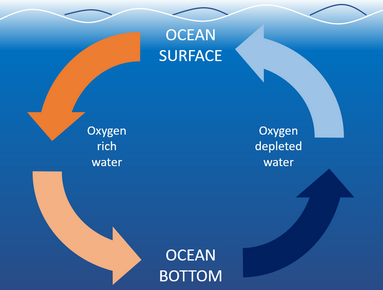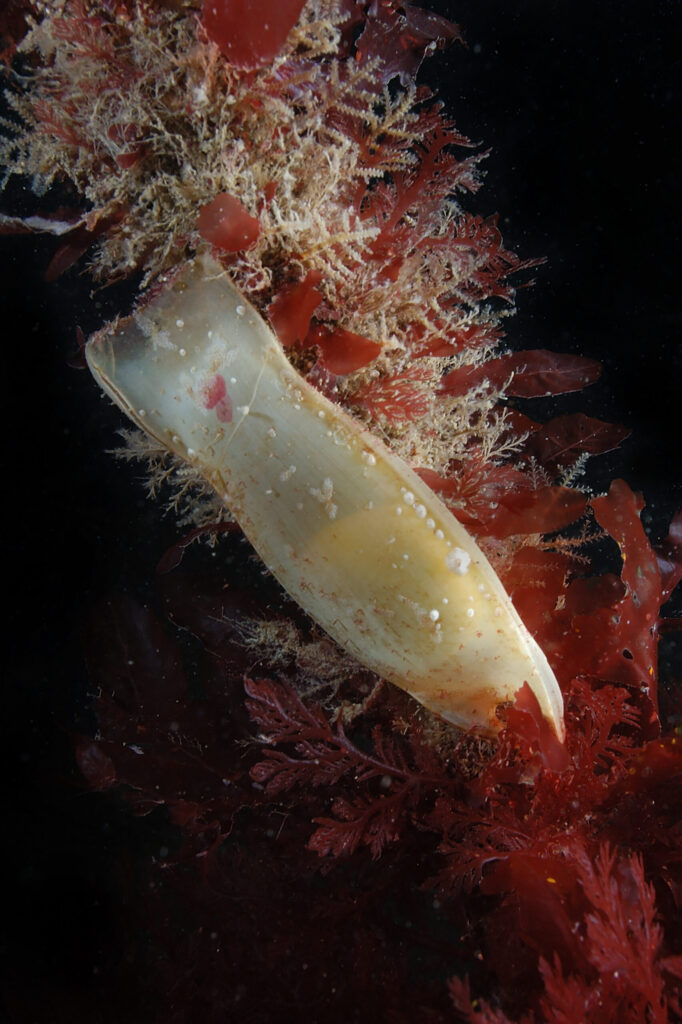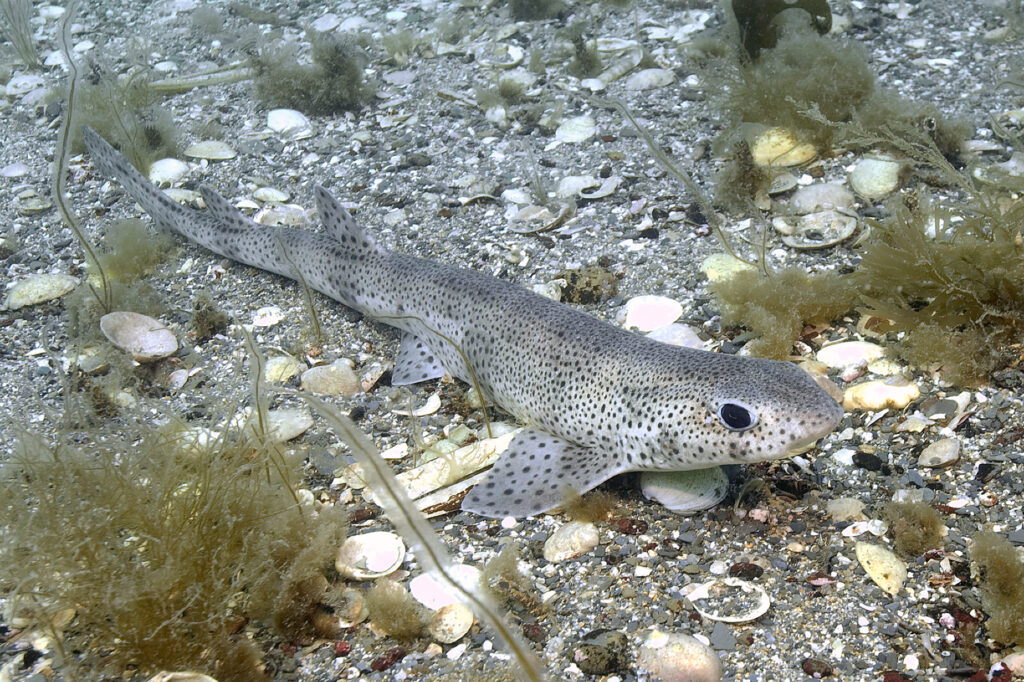Varela, J., Martins, S., Court, M., Santos, C. P., Paula, J. R., Ferreira, I. J., Diniz, M., Repolho, T. & Rosa, R. (2023). Impacts of Deoxygenation and Hypoxia on Shark Embryos Anti-Predator Behavior and Oxidative Stress. Biology, 12(4), 577. https://doi.org/10.3390/biology12040577
Deoxygenation
Hot, humid summer days sit heavy in the air, feeling like you are unable to catch your breath. This is in fact due to warm air holding less available oxygen compared to cold air, forcing our bodies to work harder to breathe. Climate change is having a similar effect on the ocean. As water warms, it expands. This reduces how much oxygen it can hold. As a result, marine organisms must expend more energy for their gills to absorb enough oxygen from the water to breathe.
The ocean absorbs oxygen by mixing with air via wind and waves. This is then distributed throughout the deeper ocean along vertical shifts in the water column. As temperatures rise, this circulation of shallow and deep water is disrupted, preventing oxygen from reaching lower depths. As a result, deoxygenated zones occur where oxygen levels are significantly less than normal. Remaining in these areas can lead to hypoxia where there is not enough oxygen in your body to regulate itself. Vulnerable marine life, such as sharks, can be negatively impacted by these zones.

Shark Vulnerability

Sharks are an important regulatory species at the top of the food chain that maintain ecosystem balance by keeping local fish populations in check. However, their slow reproduction and growth rates make them susceptible to population declines. Thus, the survival of young into adulthood is vital to maintain the number of individuals in an area. Some sharks are oviparous, meaning they lay eggs along the bottom of the ocean where the embryos will feed from the yolk inside until they are developed enough to hatch. While in the egg case, the embryos are vulnerable due to their immobility and lack of defenses against predation. To hide from predators, they will interrupt their breathing and tail beats, known as a freeze response, to avoid detection.
Survivability and Freeze Response
Researchers wanted to investigate if deoxygenated zones affect the survivability of shark embryos, and if their freeze response is impeded by the lower oxygen content. Embryos from the smallspotted catshark (Scyliorhinus canicula) were used as they are a common oviparous shark that resides in the Eastern Atlantic Ocean. They are bottom-dwelling sharks that can grow up to 2 to 3 feet in length and feed on crab and small fish. They will lay egg cases in pairs along the ocean floor, typically attached to kelp or sponges. In the study, eggs were divided into 3 tanks with different concentrations of oxygen in the water, known as oxygen saturation, based on normal conditions found in the ocean (Control = 100% oxygen saturation, Deoxygenation = 93% oxygen saturation, Hypoxia = 26% oxygen saturation). After 6 days under this treatment, the embryos were tested for their freeze response based on tail beats after a simulated predator interacted with the egg sac. Responses were then compared to investigate differences based on oxygen content in the water.

Resilience for the Future
Under hypoxic conditions, only 56% of the embryos survived until the freeze response test. This was significantly different from the survivability of the control group (100%) and deoxygenated group (87.5%). Hypoxia also significantly shortened the freeze response with more tail beats occurring sooner after the predator interaction, whilst there was no difference between the control and deoxygenated group.
Shark embryos are extremely vulnerable to changes in their environmental conditions due to their inability to move. As deoxygenated zones occur more frequently over larger areas, this can be concerning for an already vulnerable group of animals. This study demonstrates there is resilience to deoxygenation in the embryos of smallspotted catsharks with no significant difference between the survivability of the control group and deoxygenated group. However, extreme hypoxic environments can impact survivability and predator avoidance behavior, leading to negative impacts on the sustainability of local populations. More research will need to be conducted to see if other shark species may be impacted by these environmental changes.
I am a recent MSc graduate in marine biology from Bangor University, where I studied population dynamics of elasmobranchs off the coast of Wales. My interests lie in ecological data analysis to understand environmental processes and identify natural patterns. However, nothing beats being in the field and interacting directly with the marine life.

